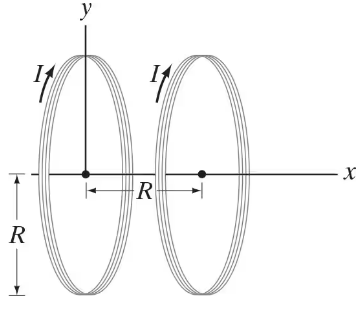Multiple Choice
What is the magnetic field at the center of the following ring of current?
5
comments

 Verified step by step guidance
Verified step by step guidance Verified video answer for a similar problem:
Verified video answer for a similar problem:
 4:53m
4:53mMaster Biot-Savart Law with Calculus with a bite sized video explanation from Patrick
Start learning